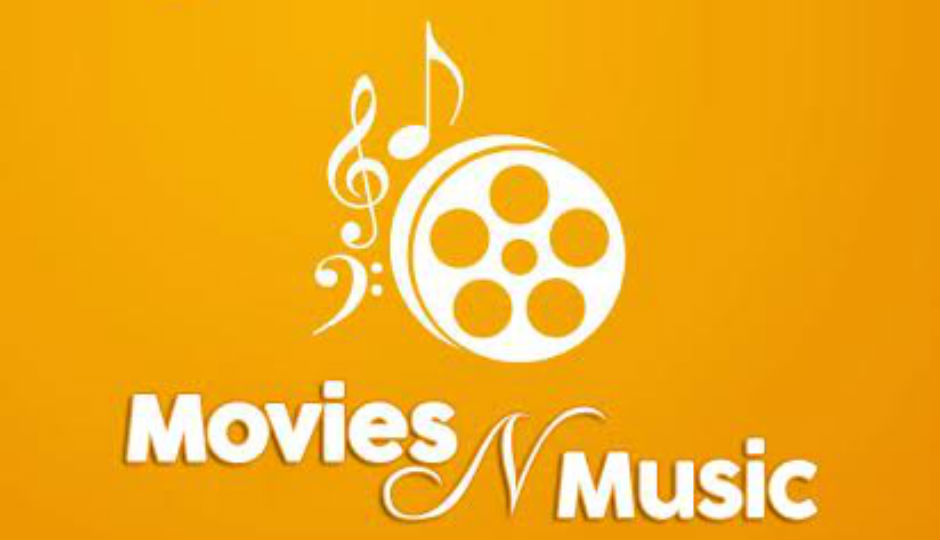
Family members have maintained the sacredness of these shows despite controversy over A Charlie Brown Christmas. The specials were highly rated in the past and enjoyed great success. However, they have lost their luster.
Although the original TV specials featured live audiences, they were soon replaced with canned laughter. This was okay for scripted shows but was not appropriate for musical stars. Christmas specials began to gain popularity in the Sixties and Seventies. This was the golden age of Christmas television specials. There were many sitcoms that were produced during this period, including Mary Bob, Bob, Clampetts and Bob. Cable TV took over the market when it was the Seventies. The networks also cut back on their broadcasts. This meant that the variety shows that used to air on these networks disappeared.
The Grinch is a Christmas TV show that has been viewed over 500,000 times. Chuck Jones directed it. The special took the story of Dr. Seuss to television and adapted it. The Grinch is a mean and green character. Boris Karloff has provided the voice. The Grinch sings the lyrics to "You're an Average One, Mr. Grinch." According to the lyrics, Grinch is described as "tangled up with knots" and "disgusting dump pile."

The Little Drummer Boy is another great Christmas TV special. Arthur Rankin, Jr. produced this animated special. The song inspired the special. The special was narrated by Greer Garson.
Another classic TV special is "Elf". Another animated special was produced by Rankin/Bass. This story is about lessons in acceptance, prejudice and love. AniMagic animated the special. It appeared like Christmas decorations had come to life. It was also impressive in its detail and world design.
The Rankin/Bass Studio produced 17 Christmas specials over 21 years. This studio offered a number of different animation styles, including stop-motion animation. AniMagic was used for the stories. To illustrate their storylines, they used exterior shots. They also had Santa's Workshop where they would create these specials. There were many Christmas specials that the studio produced. These included Santa Claus is Coming to Town and Rudolph the Red-Nosed Reindeer. Frosty was the Snowman was also produced by the studio.
Rankin/Bass also produced a number of animated specials in the 1970s. These included Santa Claus Is Coming to Town and The Year Without a Santa Claus. Some of these specials are now available in high definition. High definition versions are also available in high definition. They can provide additional information such as newspaper clippings and flaws within the animation. You can now watch some of these TV classics in digital format so you can again.

In the 1970s, Rankin/Bass also produced several stop motion animated Christmas specials. These are classics and the animation is superb.
FAQ
What industry advertises the most on TV?
The auto industry.
Advertising is important because they constantly look for ways to improve the cars they drive. They want to make their cars safer, faster and more efficient.
They must also keep customers interested in their products.
What do they do? You can find them all over the internet.
On billboards, bus stops, television, radio, magazines, newspapers, you name it.
And they aren't just any ads.
They are completely different. Some are funny, others are informative, some are inspiring, some are entertaining, and some are educational.
No matter what type of advertisement you see, it is likely to be effective.
What type of advertisement is a television?
Television is a communication medium where images are used for messages. It is the most watched medium in the entire world. The TV industry is worth more $100 billion each year.
There are many types of television advertisements. They can be broken down into two main categories.
-
Commercials (also known as "TV commercials"), which are usually 30 seconds or longer;
-
Programs/Series (also known as "programming") These programs typically last around 20 minutes. Some programs can be shorter.
Commercials are shown during commercial breaks, which are normally between every half hour of programming. These commercials can also be shown at times when there are no programs being broadcast. These include infomercials, before-and-after shows, and public service announcements.
The programs are the heart of every channel. Most channels have multiple series that air every week. Some networks only air one series a day. Other networks may air multiple series simultaneously. Some channels specialize in airing movies, sports events, news, etc.
Advertising on television has experienced significant change since its creation. Television was used mainly for entertainment purposes in the 1950s. People would watch TV shows like I Love Lucy and Father Knows Best before heading outside to have fun with their friends. With the advancement of technology, television became more popular as a way to obtain information about products or services. If someone wants to purchase a car, they can watch an advertisement for the model and see what features are available.
Which commercial is most popular on TV?
Commercials for products that people actually use are the most popular.
This is the most commonly used form of advertising. Product placement involves real-life objects being used to sell products.
You could show an actor wearing the shirt of a company, or even putting a logo on a car.
These ads do not appear on TV all the time. These ads may be found in magazines, newspapers and billboards.
Sponsorship is another very popular type. It involves companies sponsoring particular programs in order for them to advertise their products.
Because viewers are already watching the program, this type of advertising is highly effective. A viewer may remember a logo of a particular company when he watches a television show. Sponsorships are particularly effective for children’s shows as kids tend to pay closer attention to logos.
Branding is the third form of advertising. Companies use branding to make themselves look good. This can range from awarding celebrities with their name to making sure that everyone knows about your company.
Companies that wish to be well-known need to build a brand. A great image is key to making yourself popular.
There are many ways to brand your company. Branding can take many forms, including creating a logo, having someone to represent you, or even having a catchy tune.
Music is one of the best ways you can brand yourself. People listen to music all day. People may begin singing your song around the town if you have a catchy tune.
This will get you publicity for free!
How effective is advertising on television?
An advertiser's most important task is to communicate a message that resonates well with its target audience. Television advertising can be more affordable than print ads and radio. However, TV advertising does not always produce results because people are bombarded by too many messages at once.
A study showed viewers could only recall two of the three commercials that were running simultaneously when there was more than one. This shows just how difficult it can be to make an impression with one commercial.
Multimedia communication is the best way of getting your message across. For example, if you want to promote a product that helps people lose weight, advertise in magazines and newspapers as well as on television.
This will allow your product to be seen by a wider audience.
Statistics
- Video-ad views on OTT (over-the-top) devices grew 63% year over year in Q3 2016, and the trend is expected to continue, further crippling traditional TV advertising. (clearcode.cc)
- Television is a great brand awareness tool - Almost every American has a television, with 83 percent of adults having two or more, and American households keep their televisions on for 8.1 hours each day on average. (marketingevolution.com)
- Not to mention, sales rose an incredible 11% following the launch of this commercial. (qualitylogoproducts.com)
- With OTT ad revenue set to increase from 45% to 60% over the next decade, AdTech pioneers and early adopters of OTT advertising will reap its benefits in the near future. (clearcode.cc)
- This includes 97 percent of Gen X, and 95 percent of Millennials. (marketingevolution.com)
External Links
How To
How Can I Make Money From My TV Commercial?
There are many ways to make money with your TV commercial. These include:
Advertising – This is any promotion paid for that encourages viewers watch your commercial.
After you have watched your commercial, merchandisers sell merchandise related to your product.
Licensing: This is when you license your commercial so other businesses can use it for their own promotions.
Syndication – This is when your commercial is syndicated to other networks.
Advertising revenue can help pay for production costs and can also provide additional funding for future projects.
It is important to remember that advertising can generate substantial income, but it doesn't guarantee a return.
You must first identify the types of advertising that you are eligible to use in order to make money from your TV commercial. Then, you should learn more about each option before choosing one.
Next, determine where your advertisement will be placed. If you are looking for a place to advertise on popular TV programs like sports games or sitcoms, then this is the right place. Maybe you want to reach younger audiences by placing your advertisement near children's television shows.
Finally, you should decide whether you want to produce your own commercial or purchase one from a third party. If you are planning to create your own commercial you will need to find a professional who can script the production, direct the actors, and edit it. You can save time and money by purchasing pre-made commercials.
Once you have decided how you would like to create your commercial, it is time to start exploring other options. Here are some factors to consider when choosing an advertisement method.
Target Audience - The most common way to advertise is to target a certain demographic group. For example, you could choose to advertise to kids, teens, young adults, middle-aged men, or women over 50 years old.
Finding the right audience is key to your commercial's success. Don't waste your money on targeting people who don't have a need for your product.
Location - When determining where to place your commercial, you should think about the number of people who are likely to see your ad. If your plan is to advertise at a sporting event or other public events, it might make sense to place your commercial right before the first whistle. That way, everyone attending the event will see your commercial.
However, if you're trying to reach people who live outside of your area, you may have to look elsewhere. You can try using cable television or satellite dishes to broadcast your commercial to a wider audience.
Production Costs - Most companies spend between $5,000 and $10,000 per minute of commercial airtime. They charge advertisers a fee depending on the length of the spot.
If a company wishes to broadcast commercial airtime for 30 seconds, they will be charged $1,500. They will be charged $2,500 to run for 60 minutes.
A commercial can cost anywhere from $3,000 to $15,000. Additionally, you will need to hire a director and writer, producer, editor, editor, as well as actors.
Time frame - This is another important factor to consider when choosing an advertisement method. You won't have the time to wait for commercials to air after the Super Bowl if you want to sell products within one week. You'll have to choose a medium that makes it easy to advertise.
However, to reap the benefits of long-term exposure, it is important to put a lot of effort and time into creating a great commercial.
Cost per Viewer- Finally, it is worth considering what it costs for each person to view a commercial. This depends on your audience size and how many views it receives.
An example is a commercial that attracts 10 million viewers. It will be more expensive to produce a commercial that receives only 1,000 views.
You will need to evaluate all these factors in order to determine which option is best for you. Once you've decided on a strategy, you can use the following tips to help you get started.